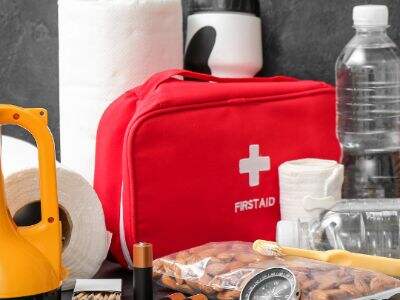When someone gets injured to their chest or punctured their lung, it can be really bad. Air can become trapped in the chest, and that can create severe difficulty for that person to breathe. What does that have to do with chest seals? Chest seal: A special skin sticker that seals the hole in the chest. It is meant to allow air out of the chest cavity, but it stops air from coming back in. Chest seals come in two principal varieties, vented and non-vented.
Vented Chest Seals
A normal chest seal makes it different from a vented chest seal because it will have small holes in it. These tiny holes are quite significant because it serves as an escape route for air in the chest. When air gets trapped inside the chest, it can create problems, like causing the lung to collapse. Inserting a vented chest seal, allows the excess air to escape, clamping off the wound to protect the lung and assist in better ventilation.
Non-Vented Chest Seals
The non-vented chest seal is slightly different on the other hand. There are absolutely no holes in this type of seal. It is completely sealed. This is especially useful if someone has a sucking chest wound. Here, air is rushing into the chest rather than becoming trapped. A non-vented chest seal prevents air from entering, allowing the lung to remain inflated and function.
Pros and Cons of Vented vs Non-Vented Chest Seals
There are definitely advantages to vented chest seals. They work well for injuries with air trapped inside the chest. These little holes are for letting out the air trapped inside the seal. Which is important to prevent the lung from getting a bigger hit. However, there is a downside. Vented chest seals may not be very effective for sucking chest wounds. The holes may allow air where it should not, which is bad for the person.
On the other hand, non-vented chest seals are extremely helpful for injuries that allow air into the chest. They restrict complete air entry, allowing the lung to re-inflate. This is a big advantage. If your seal is not placed properly, or if you get a leak, it may not do its job very well. Which is what makes it so important to apply it properly.”
How to Decide on Either Vented or Non-Vented Chest Seals
When deciding whether to use a vented or non-vented chest seal, there are some critical considerations depending on the type of injury the patient sustained. When someone has a punctured lung or gets air trapped within their chest, a vented chest seal is typically the better option. It also helps letting the air to pass through, which is important for their recovery. In the opposite case when someone has a sucking chest wound a non-vented chest seal is better. Such a seal will help prevent air from streaming inside.
So keep in mind where the injury occurred, too. On the other hand, if the person is in a remote area far away from hospitals or medical help using a vented chest seal is possibly the best way on preventing further damage to their lung. If you happen to have access to a hospital or clinic, a non-vented chest seal may be the better option as doctors will be available to treat the wound further.
Guidelines for Vented vs. Non-Vented Chest Seals
Vented chest seals are indicated for trauma where air is trapped within the thoracic cavity. These could range from everything to punctured lungs to collapsed lungs and the like. The small holes in the vented chest seals allow the excess air to escape and further helps the lung to not collapse.
Conversely, non-vented chest seals work better at sucking chest wounds. “Because they allow air to enter the chest cavity and potential collapse of the lung, these can be dangerous.” Because the chest seal is non-vented, this prevents air from entering the chest cavity, which allows the lung to re-inflate and function properly once again.
 EN
EN
 FR
FR
 DE
DE
 IT
IT
 JA
JA
 KO
KO
 RU
RU
 ES
ES
 AR
AR
 BG
BG
 HR
HR
 DA
DA
 NL
NL
 FI
FI
 EL
EL
 NO
NO
 PL
PL
 PT
PT
 RO
RO
 SV
SV
 TL
TL
 ID
ID
 SR
SR
 UK
UK
 VI
VI
 SQ
SQ
 TH
TH
 TR
TR
 AF
AF
 MS
MS
 CY
CY
 IS
IS
 HY
HY
 AZ
AZ
 KA
KA
 MN
MN
 MY
MY
 KK
KK
 UZ
UZ
 CS
CS



